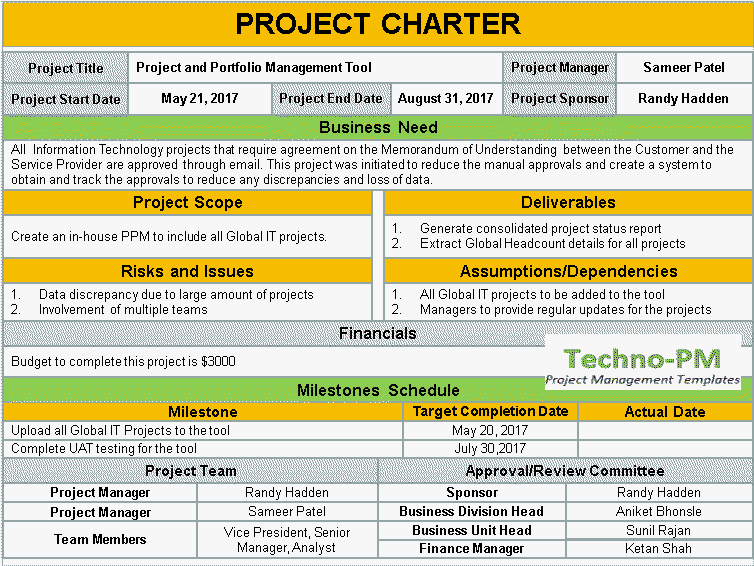The Lean Project Charter is a document where we detail the main aspects and considerations of a project, based on its life cycle. This project management tool is a one-pager elaborated to formally authorize a project or a particular phase framed within one.
From an operational perspective, this document is a tool that gathers the work guidelines and functions as a framework that also delimits the software project or of any other nature. It documents the initial requirements that meet the needs and expectations of stakeholders. In this sense, it is useful to keep track of the project at all times and to be well organized during planning, implementation, and control.
Why carry out a Lean Project Charter?
Everything that is specified in this document we are going to plan and then we are going to execute. The purpose of this “cover letter” is to standardize and correctly plan the steps involved in the development of a project, in order to be able to carry it out safely from start to finish.
This project management tool links the decision-making managerial level with the project management level. Every project must have a project team led by the project manager. In this charter, it should be very specifically detailed what is the level of authority that this director has to make decisions within the project, whether they are decisions that affect it positively or negatively.
This document is prepared before the development of the project and all strategic stakeholders of the project must participate in its creation to align expectations, agree courses of action and establish preferences regarding the framework and reference of the project.
What is the structure of a Lean Project Charter?
There are various work templates and methodologies to organize a Project Charter, however, the Project Management Institute (PMI) has not defined a specific framework for its implementation. This realizes that each project and each organization shall adapt this project management tool to their particular needs. As general content, it can include the following sections that represent points that must be adapted to each project in particular:
- Project data. Here you should specify the enterprise, the project’s name, the date of preparation of the Project Charter, the clients, and the project manager.
- Purpose and justification, which allows demonstrating the reasons why the product or service in question needs to be developed. You should specify the context of the organization, the needs to satisfy, and all the legal requirements.
- Deliverables. This section is about the minimum viable products, documents, partial processes, and others, that are elaborated to complete and measure a project. It is important to clarify that the deliverables must be measurable and verifiable.
- Project life cycle. This phase represents the set of phases into which the project is divided. Many times we structure is based on some work methodology such as Design Thinking.
- Objectives of the project, which represent the goals that we set ourselves with the purpose of understanding, in the charter project, why we are carrying out this project.
- Budget, understood as the preliminary estimate of the resources needed to complete the project activities.
- Schedule of main milestones. These are activities that can be measured in duration, which mark important and key moments within the project. Some examples can be the official presentation of the project to the client, a meeting with the general manager to approve the project, periodic progress meetings to tell how the project is developing, and others. It is useful to structure the schedule using work methodologies such as the Kanban board or the Gantt chart.
- Stakeholders or interested parties. They are all those people and organizations, internal or external, who are involved in the project and who can positively or negatively influence its development. Once all the project stakeholders have been identified, the next step is to identify the expectations or interests that each of them has in carrying out the project. These will represent the fundamental requirements that must be considered in the realization of the project objectives.
We invite you to review this example of the development of a Lean Project Charter that can also serve as a template to develop yours.

Our recommendation…
For this document to be useful, it must be presented very briefly. At Huenei we like to understand it similarly to the Canvas model in business planning: The Project Charter must contain all the necessary and relevant information but must have the ability to be compressed into a single page. In this sense, like the Canvas model, the Lean Project Charter will allow us to have at a glance access to all the processes and flows involved in a project from a macro, global perspective.
We have covered the general aspects that a Project Charter should include, which allows administrators the possibility of seeing the most important factors of the project to be able to start it. It is finally necessary to remember that the charter project must be agreed upon and signed by the management positions, partners, and sponsors of the project.
As a corollary, we would like to emphasize that by using this tool we seek to avoid misunderstandings in the planning and execution of projects. In other words, we will always do what is registered in the Lean Project Charter and we will never do what this tool does not tell us.

